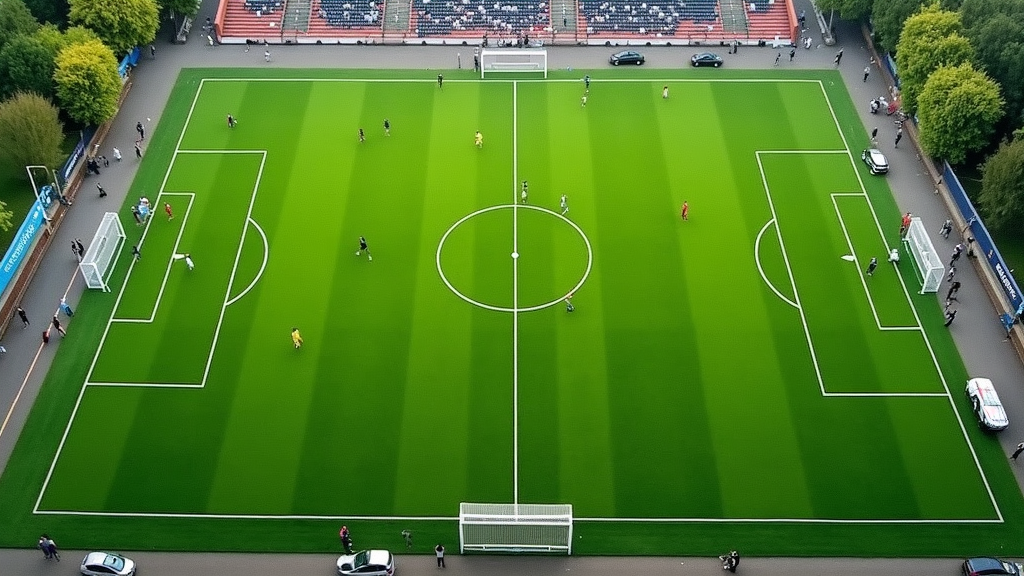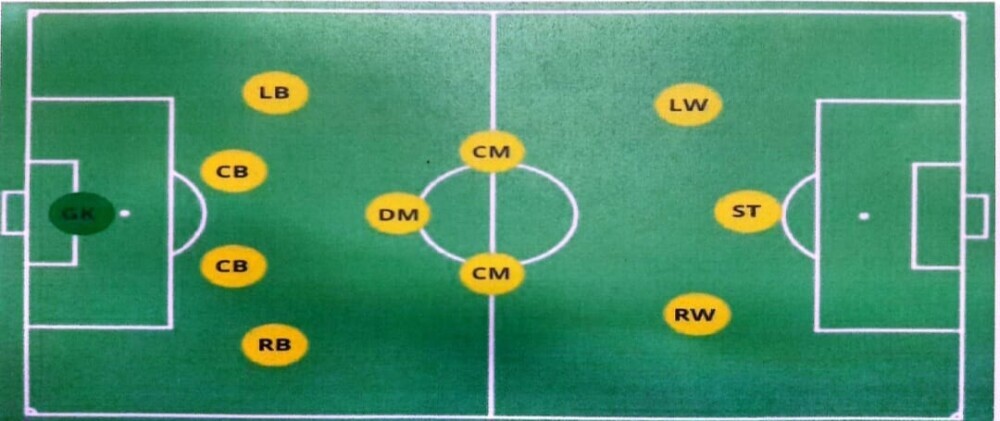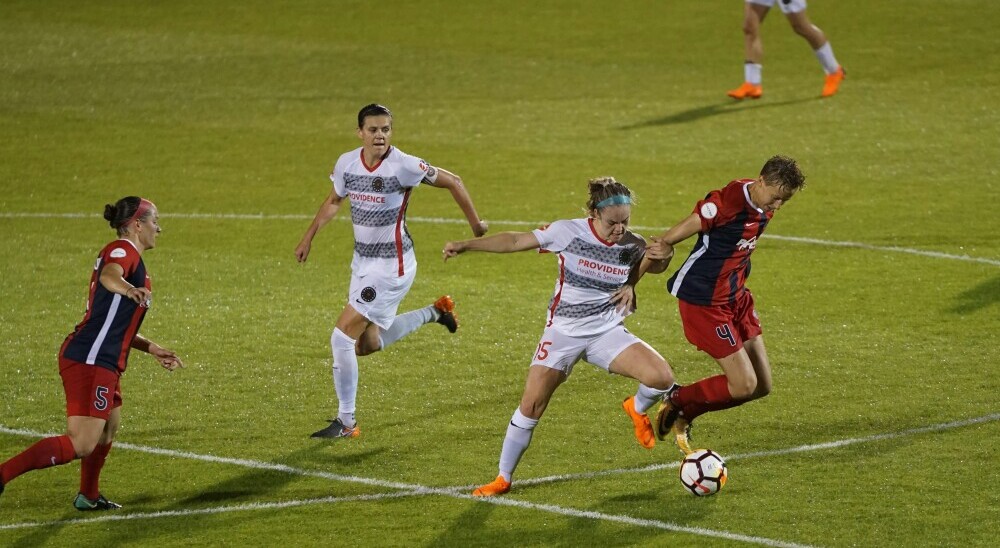Soccer formations are not just a matter of drawing lines on a field. They are strategic blueprints that can help a team exploit the weaknesses of their opponents.
I always find that understanding formations and tactics gives an edge, whether you’re playing in a local league or just enjoying a friendly match.
Soccer is a beautiful game of strategy, and using the right formation can create space, disrupt the opposition, and open up scoring opportunities.

Fundamental Concepts in Soccer Formations
Soccer formations serve as the backbone for a team’s strategy. They help define how players are spaced out and what roles each member takes on during a match.
Many formations, such as the popular 4-3-3 or 4-2-3-1, offer different advantages depending on the strengths and weaknesses of both teams.
I have noticed that knowing the nuances of each formation can really change the approach to a game.
A formation isn’t static; it’s a guide. Coaches use it to structure the team’s defense, midfield, and attack. More importantly, formations are designed to counter the specific strategies of opponents.
If an opposing team leaves space on the wings, a formation that maximizes width might be the perfect counter.
For those wanting to dive deeper into how different systems work, books like “Soccer Systems and Strategies” by Jens Bangsbo offer invaluable insights on how top teams implement tactics to outwit opponents.
Every detail, from the balance of players in the center to the position of wing-backs, plays a part in how well a team exploits gaps in the opposing lineup.
Identifying and Exploiting Opponent Weaknesses
One of the most interesting aspects of soccer is analyzing opponents and spotting their vulnerabilities.
Scouting reports, observation during matches, and historical data can all provide insights into where an opponent might be less formidable.
When a team is aware of these weak points, the formation can be adjusted to maximize attacking opportunities.
For instance, if the opposing side uses a high defensive line, quick counterattacks and through balls can be particularly effective.
I often think about the importance of rapid transitions when the opponent has overcommitted everyone forward.
On the other hand, if there is a noticeable gap in center defense, switching to a more central formation such as a diamond midfield might create the space needed to build a successful attack.
The key lies in flexibility. A rigid tactic can backfire if the opponent adapts during the game. It’s clear that a formation should be fluid enough to seize opportunities while maintaining a solid defensive structure.
This balance of aggression and caution is what makes forming and changing soccer formations so engaging.
Planning and Adapting Your Formation Strategy
Implementing the right formation requires planning before, during, and after a match.
A coach might start with an ideal plan based on the team’s strengths and the opponent’s weaknesses but must remain ready to change tactics on the fly. Adaptability is a hallmark of successful soccer teams.
The planning process often involves a thorough breakdown of key moments in previous games, identifying repeated patterns in an opponent’s play, and aligning those insights with the team’s best assets.
I like to think of it as piecing together a puzzle, where every player’s role matters.
Using a tactical coaching board like the Murray Sporting Goods Dry Erase Soccer Coaching Clipboard helps visualize changes in formation and communicate clearly with players during breaks.
Here are some strategic formations that coaches often consider:
- 4-3-3: This formation brings width and pace to the attack. It provides balance on the flanks and keeps the midfield dynamic, especially useful when facing teams that are vulnerable on the sides.
- 4-2-3-1: Known for its balanced approach, this setup allows two defensive midfielders to shield the back while three attacking midfielders create chances for the lone striker. It often works well against teams that press high up the pitch.
- 3-5-2: This tactical setup offers strength in the midfield and attacking versatility. With wing-backs true to their roles, this formation can overwhelm opponents who struggle to cover wide areas.
In planning game strategies, these formations are not just chosen at random. Instead, their benefits are measured against the known weaknesses of the opponent.
I’ve seen teams switch from one formation to another within the same match, striking a balance between defense and offense based on live game feedback.
Key Considerations When Adjusting Your Tactics
Even the best-laid plans require adjustments on the field. Many teams experience situations where the initial formation becomes less effective against unexpected changes by the opposition. Here are some factors I keep in mind when thinking about in-game adjustments:
- Player Roles and Strengths: Every player brings a unique set of skills. Having versatile players who can cover multiple positions allows for smooth transitions between formations.
- Opponent Behavior: Observing how the opposition reacts mid-game can provide cues on where to press harder or drop back. Changing the formation to apply more pressure in certain areas may yield positive results.
- Game Tempo: Matches can shift from slower, possession-based play to rapid counters. Adapting the formation to suit the tempo is essential, for instance by switching to more compact structures when under heavy pressure.
- Injuries and Fatigue: The health and energy levels of players have a direct impact on how well a formation works. Modifications might be necessary to cover for missing players, which can inadvertently open new opportunities against the opponent.
Subsections within this tactical adjustment sometimes call for even more detailed strategies. For instance, when opponents leave the flanks open, width becomes a tactical advantage.
Adapting a 4-3-3 to a four-man defense with wing-backs who push forward can stretch the opposition and create mismatches.
Adjusting Movement on the Field
Movement is a vital pillar in any soccer strategy. A well-drilled team understands that a fixed formation is less effective than one that moves fluidly.
I consider it important that players adjust their positions based on the flow of the game. When one side of the field shows gaps, shifting players can exploit that imbalance.
This kind of movement often involves quick passes and coordinated runs, which can cause disarray in the enemy’s setup.
Using wearables like the STATSports Apex Athlete Series GPS Tracker helps monitor individual movement patterns, ensuring players maintain positional discipline.
Exploiting the Flanks
The flanks are often where weaknesses are most exposed. When an opponent fails to cover the wide spaces properly, using overlapping runs and cross-field passes can be very rewarding.
Wing-backs or wide midfielders provide the additional width that forces defenders out of position. In many cases, tactical drills that emphasize lateral movement and crossing have led to significant scoring opportunities for teams that master this strategy.
Advanced Formation Tactics and In-Game Adjustments
After establishing a foundational formation, thinking a few moves ahead is where advanced tactics come into play.
With experience, I learned that sophistication in strategy is really important for disrupting well-prepared defenses.
Advanced tactics might involve switching from one formation to another in the middle of a match, often referred to as being tactically versatile.
Here are a few advanced strategies that coaches and teams sometimes use:
Switching Formations Mid-Game: During a match, a coach might start with one formation and then switch details based on the opponent’s response.
For example, if a team starts with a defensive structure, a quick switch to an attacking formation can catch an opponent off guard, especially if they have started committing many players forward.
Pressing and Counter-Pressing: These ideas focus on winning the ball back quickly. The right formation facilitates coordinated pressing, allowing players to force errors.
Counter-pressing then ensures that, once the ball is gained, the transition to attack is swift. I have seen scenarios where even a subtle change in positioning can make this tactic more effective.
Overloading Key Areas: Some teams choose to overload a specific side of the pitch to create numerical advantages.
By directing more players into a particular zone, it becomes easier to break through an opponent’s defense. Timing and precision in executing such boosts are really important, and a slight miscalculation might leave other areas too exposed.
Integrating these advanced tactics requires not only an in-depth analysis of both your team and the opponent but also a high level of trust among players. With practice and experience, these strategies can lead to dramatic shifts in the match’s momentum.
Step-by-Step Guide to Implementing Your Tactics
Putting theory into practice is a challenge, but breaking it down into actionable steps can make a big difference. I often outline real-world examples to better illustrate this process. Here’s a quick guide that I find useful when planning tactics:
- Analyze the Opponent: Before the game, study the opposition’s previous matches to identify where they are vulnerable. Look for patterns in their defensive alignment, especially in wide areas and during counterattacks.
- Select a Flexible Formation: Choose a formation that complements your team’s strengths while allowing quick shifts in strategy. For example, a 4-3-3 could offer the necessary width and depth.
- Plan Specific Adjustments: Determine in advance which areas you will target if the game unfolds in a particular way. Knowing whether to press high or hold back can be the difference between dominating the match or being caught off guard.
- Practice Transition Drills: During training, implement drills that simulate switching formations and executing rapid counterattacks. This helps players understand their positional changes and improves the overall fluidity of the team. Recording your matches using tools like the GoPro HERO12 Black + Chest Mount Bundle lets you revisit key moments to analyze how your formation adjustments played out on the field.
- Communicate Clearly: Effective communication on the field is key. Players should be aware of tactical shifts and understand how their roles change as the game progresses.
- Review and Adjust: Post-match analysis can pinpoint what worked well and where further improvements are needed. A thorough review helps refine tactics for future games.
By following these steps, a team can better cope with unexpected scenarios during matches.
I firmly believe that plan execution and flexibility are interdependent factors that together can tip the scales in your favor on the field.
Emerging Trends in Formation Strategies
In recent years, soccer strategies have experienced a next-stage shift in terms of formation flexibility and dynamic positioning.
Coaches are increasingly tapping into real-time data analytics and video technology to map out the opponent’s movements.
This tech-led approach allows teams to quickly adjust formations as the game evolves, ensuring they always have a tactical edge. Modern formations are not fixed; they are constantly evolving to meet the unique demands of each match.
More clubs are now embracing a philosophy of rotating players across various positions during a game.
This approach not only spreads out responsibilities but also confuses opponents who expect linear, predictable strategies.
By being ready to switch things up, teams can change the momentum of play almost instantaneously, turning defensive setups into unexpected attacking threats.
Younger academies and grassroots programs are also starting to incorporate these innovative methods into training sessions.
This next-level cool approach is all about staying sharp and making the most of every tactical nuance on the pitch.
As global competition increases, these innovative strategies ensure that teams are never caught off guard and are always ready to contest every ball.
Frequently Asked Questions
This section addresses common questions about soccer formations and how they can be used to target specific weaknesses.
Question: How do I choose the best formation against a strong defensive opponent?
Answer: It’s essential to review the opponent’s previous matches and identify any gaps in their structure. A formation like the 4-3-3 can provide the extra width needed to stretch their defense and open up space for counters.
Question: Can formations be adjusted during a match?
Answer: Absolutely. Many successful teams adjust their formations mid-game based on the evolving dynamics. A coach might start defensively and switch to a more aggressive setup if the opportunity presents itself.
Question: What are some common pitfalls when changing formations?
Answer: One major pitfall is losing team cohesion. When players switch positions without proper communication, it can lead to confusion and weak spots. Consistent practice of these transitions makes all the difference.
Question: How important is player versatility in formation strategy?
Answer: Very important. Teams with players who can operate in multiple roles have a significant advantage. Versatile players allow seamless transitions that can exploit opponent weaknesses and adjust to in-game developments.
Final Thoughts
Soccer formations and tactical adjustments play a key role in turning a good game into an outstanding one.
By understanding how to use your team’s formation to take advantage of the opposition’s weaknesses, you set the stage for a more dynamic and unpredictable match.
Success in soccer is built on preparation, practice, and the ability to think quickly on your feet. I often encourage teams to experiment with different setups during training.
This experimentation helps build a strong foundation and confidence when tailoring tactics to suit the opposing team. Using formations to strategically exploit spaces or overload specific areas can lead to controlling play and creating goal-scoring opportunities.
Every match is a new challenge. Even if a particular strategy worked well in one game, you must be ready to adapt if the opponent changes their scheme.
The willingness to adjust, combined with a deep understanding of fundamental strategies and advanced tactics, ensures continuous improvement and competitiveness on the pitch.
Soccer is a game where every detail counts. Development in understanding and implementing various formations allows teams to tap into the hidden potential of tactical adjustments.
Enjoy the process of exploring how different setups can influence the game and lead to those breakthrough moments that fans remember long after the final whistle has blown.
Want to level up your coaching game? Check out some of my favorite tactical gear:
- Murray Sporting Goods Coaching Board
- Soccer Systems and Strategies Book
- STATSports Apex GPS Tracker
- GoPro HERO12 for Tactical Review
Happy soccer season!!!!!!
”Here’s a little transparency: Our website contains Amazon affiliate links. This means if you click and make a purchase, we may receive a small commission. Don’t worry, there’s no extra cost to you. It’s a simple way you can support our mission to bring you quality content.”





Raymond, this is a masterclass on the strategic depth behind soccer formations. Your breakdown of formations like the 4-3-3 and 4-2-3-1, paired with real-game adjustments and tactical flexibility, really hits home. I especially appreciated your point about formations being guides, not rigid structures—too many overlook the importance of adaptability during a match. The emphasis on exploiting weaknesses through width, movement, and real-time data is spot-on. Your insights about advanced tactics like counter-pressing and overloading key areas show a deep understanding of modern football trends. The practical tools you recommend—like coaching boards and GPS trackers—make this not only theoretical but actionable for coaches and players at every level. This post is a goldmine for anyone looking to elevate their tactical approach, whether in grassroots or competitive leagues. Thanks for sharing such a comprehensive and insightful piece!
Hi Andrejs,
Thank you so much for your generous and thoughtful comment—your words truly mean a lot!
I’m glad the post resonated with you, especially the emphasis on flexibility and real-time adjustments. You’re absolutely right—formations are just the framework.
What separates good teams from great ones is how they adapt within that structure, responding dynamically to what the game presents.
It’s great to hear that you found value in the discussion around tactical width, movement, and exploiting space—these are such pivotal elements in modern football, especially with how fast-paced and data-driven the game has become.
The growing accessibility of tools like GPS trackers and coaching boards really helps bring that high-level thinking into grassroots and semi-pro environments, which is exciting for the future of the game.
If you ever experiment with any of these strategies in your coaching or playing environment, I’d love to hear how they go!
Thanks again for engaging with the article and for being part of the conversation—this kind of exchange is what keeps the game evolving.
Wishing you continued success on and off the pitch!
Best regards,
Raymond